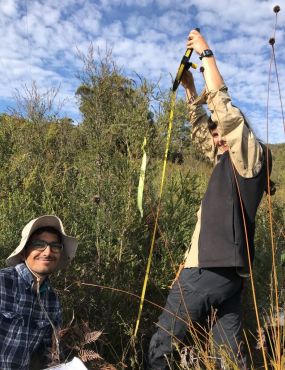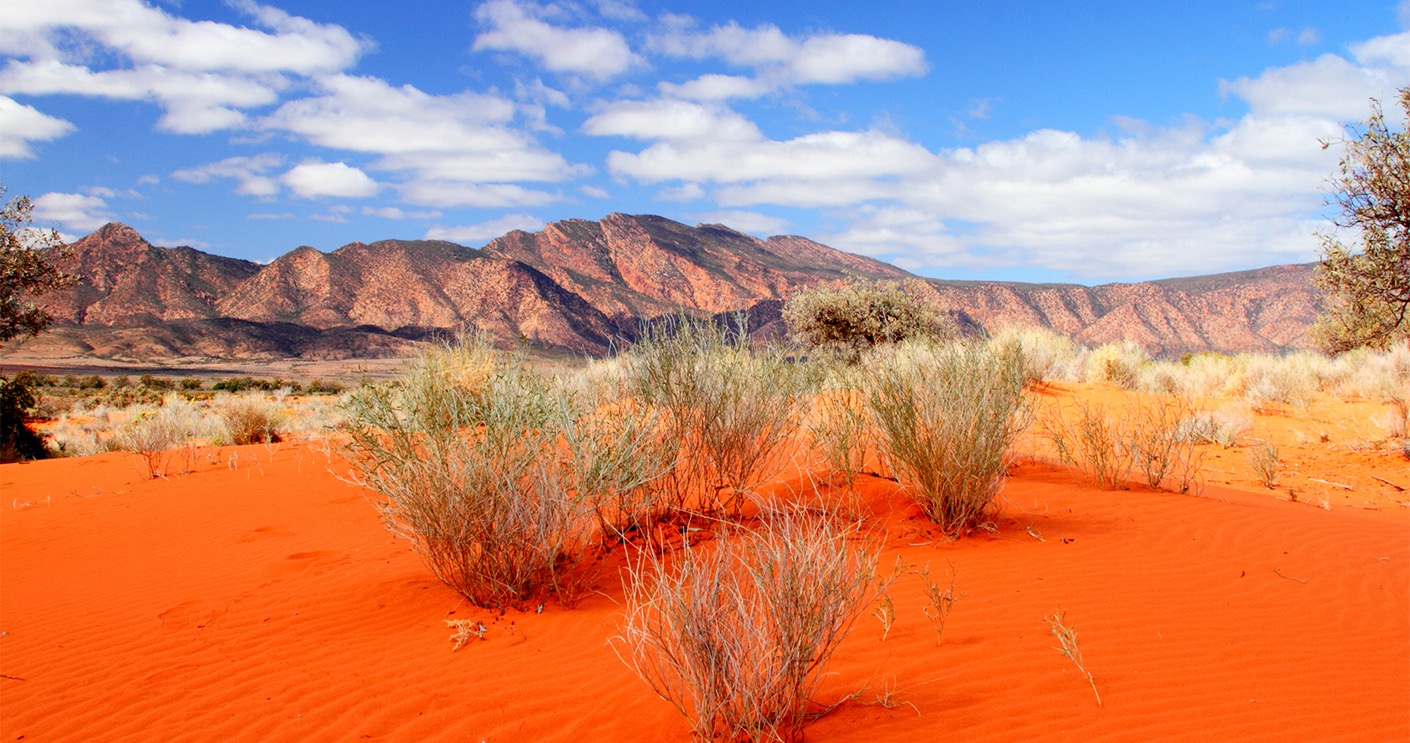Australia’s natural landscape poses a unique challenge for native plants. After Antarctica, it is the driest and most nutrient-poor continent on Earth and, while native Australian plants have evolved within this environment, they exist under extreme conditions which are projected to become even more extreme with ongoing climate change.
By learning more about how native Australian plants have adapted to survive using different strategies, we can deepen our understanding of how plants all over the world will respond to increasingly harsh conditions.
 After receiving generous funding from the Hermon Slade Foundation, a team of researchers at Macquarie, led by Dr Andrea Westerband, set out to understand how plants are able to adapt to a range of climate and soil conditions.
After receiving generous funding from the Hermon Slade Foundation, a team of researchers at Macquarie, led by Dr Andrea Westerband, set out to understand how plants are able to adapt to a range of climate and soil conditions.
Their focus was on the process of photosynthesis—where plants use sunlight, water and carbon dioxide to create oxygen and energy. More specifically, the aim was to investigate how plants balance water and nitrogen during this process. The theory being explored was a simple one, based in microeconomics – that plants have evolved to be incredibly efficient by producing carbohydrates at the least total cost to them. In other words, they should invest resources in a way that maximises their growth and survival. By testing this theory using plants growing in nature, we can improve our ability to conserve plant species both now and in the coming decades.
The team has discovered that Australian native plants do, in fact, optimise photosynthesis by tailoring their use of water and nitrogen to the specific climate within which they grow. They respond to changes in temperature, precipitation, soil phosphorus and pH levels by changing the structure of their leaves, by reducing water losses and by increasing leaf nitrogen levels—nitrogen being a critical component of important enzymes in plants. Together, this strategy improves their growth and chances for survival.
This discovery will better enable experts to predict how plants will respond to changes in climate and soil properties at a continental scale. Importantly, this discovery has also shown how climate and soil properties directly impact variation in the shape and function of leaves. This knowledge could be leveraged by future teams to fortify at-risk species and plant communities from the damages of climate change or losses of soil nutrients. There is also the potential to improve crop yield by identifying which species are best at optimising photosynthesis.
The findings of this project have already been leveraged into new investigation and discovery, despite the challenges faced by the team, which were unexpected at its inception. These challenges include drought and fires in 2019 and 2020, restrictions on travel due to the ongoing COVID-19 pandemic and more recently, ongoing flooding in western NSW. In response to these challenges, the study design was refined and adapted with the team using this opportunity to publish the existing data and to articulate the future direction of the broader research program. This has been recognised through academic publication and an Australian Research Council Discovery Award, ensuring continued impact and investment in this important area of investigation.
This project has led to new discoveries, including a greater understanding of how plants optimise various functions within their leaves. The research program has now been expanded to consider how leaves and stems coordinate with each other to maximise a plant’s ability to efficiently create energy while reducing water loss. Plans are also in place to collect complementary data in more extreme climates, to further understand this important biological process.
The team would like to thank the Hermon Slade Foundation for its generosity. A greater understanding of the natural world is key to creating new methods needed to protect it. The more we know, the more we are able to do. Discoveries such as the ones made by the team throughout the course of this project are impossible without the support of individuals and organisations who share a vision for a sustainable and prosperous future.


 Back to homepage
Back to homepage